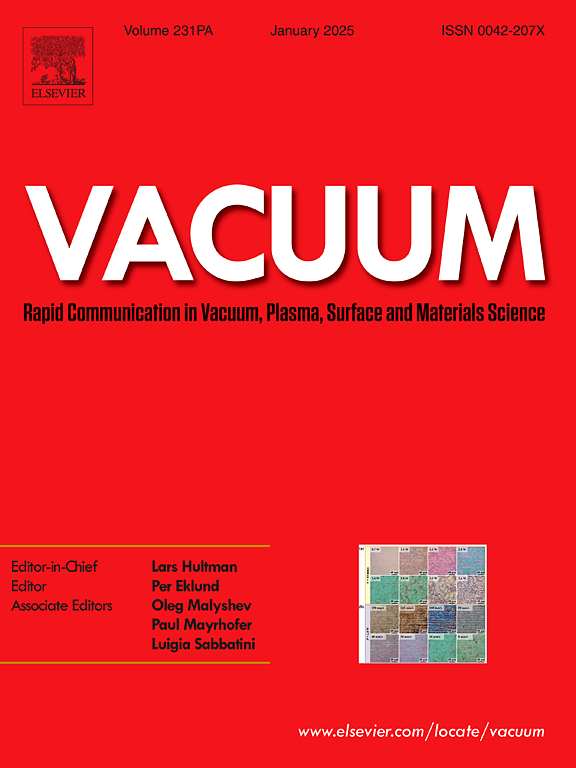Development and characterization of a large-scale high-vacuum environment simulation device with ten-kilogram-scale micron-sized lunar dust
IF 3.8
2区 材料科学
Q2 MATERIALS SCIENCE, MULTIDISCIPLINARY
引用次数: 0
Abstract
As lunar exploration missions progress, simulation chambers that accurately replicate the lunar environment are becoming essential. These chambers play a crucial role in studying the physical and chemical properties of the lunar surface, as well as in calibrating and evaluating detector reliability. However, current lunar environment simulators face significant challenges in effectively recreating the conditions of lunar dust. In response, we have developed a novel lunar environment simulation apparatus that focuses on improving vacuum performance in dusty conditions. We propose a vacuum experimental protocol specifically designed for the unique dust conditions found on the lunar surface and have validated its reliability through several experiments. Our results show that the system achieves a vacuum level of 10−5 Pa under simulated kilogram-scale lunar dust conditions, meeting established standards. This work offers more realistic and reliable experimental conditions for lunar exploration, making a substantial contribution to the advancement of lunar environmental studies.
10公斤级微米级月球尘埃大型高真空环境模拟装置的研制与表征
随着月球探测任务的进展,精确复制月球环境的模拟室变得至关重要。这些室在研究月球表面的物理和化学性质以及校准和评估探测器可靠性方面发挥着至关重要的作用。然而,目前的月球环境模拟器在有效地重现月球尘埃条件方面面临着重大挑战。作为回应,我们开发了一种新型的月球环境模拟装置,重点是提高在多尘条件下的真空性能。我们提出了一种专门针对月球表面独特尘埃条件设计的真空实验方案,并通过多次实验验证了其可靠性。我们的研究结果表明,该系统在模拟的公斤级月球尘埃条件下达到了10−5 Pa的真空水平,符合既定标准。这项工作为月球探测提供了更加真实可靠的实验条件,为推进月球环境研究做出了重大贡献。
本文章由计算机程序翻译,如有差异,请以英文原文为准。
求助全文
约1分钟内获得全文
求助全文
来源期刊

Vacuum
工程技术-材料科学:综合
CiteScore
6.80
自引率
17.50%
发文量
0
审稿时长
34 days
期刊介绍:
Vacuum is an international rapid publications journal with a focus on short communication. All papers are peer-reviewed, with the review process for short communication geared towards very fast turnaround times. The journal also published full research papers, thematic issues and selected papers from leading conferences.
A report in Vacuum should represent a major advance in an area that involves a controlled environment at pressures of one atmosphere or below.
The scope of the journal includes:
1. Vacuum; original developments in vacuum pumping and instrumentation, vacuum measurement, vacuum gas dynamics, gas-surface interactions, surface treatment for UHV applications and low outgassing, vacuum melting, sintering, and vacuum metrology. Technology and solutions for large-scale facilities (e.g., particle accelerators and fusion devices). New instrumentation ( e.g., detectors and electron microscopes).
2. Plasma science; advances in PVD, CVD, plasma-assisted CVD, ion sources, deposition processes and analysis.
3. Surface science; surface engineering, surface chemistry, surface analysis, crystal growth, ion-surface interactions and etching, nanometer-scale processing, surface modification.
4. Materials science; novel functional or structural materials. Metals, ceramics, and polymers. Experiments, simulations, and modelling for understanding structure-property relationships. Thin films and coatings. Nanostructures and ion implantation.
 求助内容:
求助内容: 应助结果提醒方式:
应助结果提醒方式:


